第14章
Birds bend their legs in the same way as quadrupeds.For their natural construction is broadly speaking nearly the same.That is, in birds the wings are a substitute for the forelegs; and so they are bent in the same way as the forelegs of a quadruped, since when they move to progress the natural beginning of change is from the wings (as in quadrupeds from the forelegs).Flight in fact is their appropriate movement.And so if the wings be cut off a bird can neither stand still nor go forwards.
Again, the bird though a biped is not erect, and has the forward parts of the body lighter than the hind, and so it is necessary (or at least preferable for the standing posture) to have the thigh so placed below the body as it actually is, I mean growing towards the back.
If then it must have this situation the flexion of the leg must be backwards, as in the hind legs of quadrupeds.The reasons are the same as those given in the case of viviparous quadrupeds.
If now we survey generally birds and winged insects, and animals which swim in a watery medium, all I mean that make their progress in water by dint of organs of movement, it is not difficult to see that it is better to have the attachment of the parts in question oblique to the frame, exactly as in fact we see it to be both in birds and insects.And this same arrangement obtains also among fishes.
Among birds the wings are attached obliquely; so are the fins in water animals, and the feather-like wings of insects.In this way they divide the air or water most quickly and with most force and so effect their movement.For the hinder parts in this way would follow forwards as they are carried along in the yielding medium, fish in the water, birds in the air.
Of oviparous quadrupeds all those that live in holes, like crocodiles, lizards, spotted lizards, freshwater tortoises, and turtles, have their legs attached obliquely as their whole body sprawls over the ground, and bend them obliquely.The reason is that this is useful for ease in creeping into holes, and for sitting upon their eggs and guarding them.And as they are splayed outwards they must of necessity tuck in their thighs and put them under them in order to achieve the lifting of the whole body.In view of this they cannot bend them otherwise than outwards.